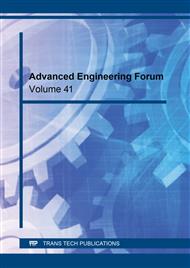[1]
Vincent Briere, Kent A. Harries, Jarret Kasan, Charles Hager, Dilation behavior of seven-wire prestressing strand -The Hoyer effect,, Construction and Building Materials, Volume 40, 2013, Pages 650-658, ISSN 0950-0618, https://doi.org/10.1016/j.conbuildmat.2012.11.064.
DOI: 10.1016/j.conbuildmat.2012.11.064
Google Scholar
[2]
Jack R. Janney Nature of Bond in Pre-Tensioned Prestressed Concrete, ACI Journal Proceedings, May 1, 1954, Volume: 50, Issue: 5, Pages: 717-736.
DOI: 10.14359/11790
Google Scholar
[3]
Homayoun G. Abrishami, Denis Mitchell, Bond Characteristics of Pretensioned Strand, ACI Materials Journal, May 1, 1993, Volume: 90, Issue: 3, Pages: 228-235.
Google Scholar
[4]
Adrijana Savic Developing Qualification Test Procedure to Ensure Adequate Splitting Resistance in Pre-tensioned Concrete Ties,, Thesis, August (2019).
Google Scholar
[5]
Savic, Adrijana, Beck, B. Terry, Robertson, Aaron A., Peterman, Robert J., Clark, Jeremiah, and Wu, Chih-Hang (John). Effects of Cover, Compressive Strength, and Wire Type on Bond Performance in Prismatic Prestressed Concrete Members., Proceedings of the 2018 Joint Rail Conference. 2018 Joint Rail Conference. Pittsburgh, Pennsylvania, USA. April 18–20, 2018.V001T01A007.ASME. https://doi.org/10.1115/JRC2018-6153.
DOI: 10.1115/jrc2018-6153
Google Scholar
[6]
Naga N.B. Bodapati A Comprehensive Study of Prestressing Steel and Concrete Variables Affecting Transfer Length in Pre-Tensioned Concrete Crossties, Thesis 2019, Kansas State University.
Google Scholar
[7]
Matthew Arnold, R.J. Peterman, B.T. Beck, H-H Wu, Development of Un-Tensioned Pullout Tests to Determine the Bond Quality of Prestressing Reinforcements Used in Pretensioned Concrete Railroad Ties, Technical Report, KSU-21-5 Rural Railroad safety Center April (2021).
DOI: 10.1115/jrc2014-3833
Google Scholar
[8]
Savic, Adrijana, Beck, B. Terry, Shafiei Dastgerdi, Aref, Peterman, Robert J., Riding, Kyle, and Robertson, Aaron A. The Effect of Wire Type on Cracking Propensity in Prestressed Concrete Prisms., Proceedings of the 2019 Joint Rail Conference. 2019 Joint Rail Conference. Snowbird, Utah, USA. April 9–12, 2019. V001T01A002. ASME. https://doi.org/10.1115/JRC2019-1234.
DOI: 10.1115/jrc2019-1234
Google Scholar
[9]
Shafiei Dastgerdi, Aref, Savic, Adrijana, Peterman, Robert J., Riding, Kyle, and Beck, B. Terry. Evaluation of Splitting Crack Propagation in Pre-Stressed Concrete Ties Made with Different Types of Coarse Aggregate., Proceedings of the 2019 Joint Rail Conference. 2019 Joint Rail Conference. Snowbird, Utah, USA. April 9–12, 2019. V001T01A015. ASME. https://doi.org/10.1115/JRC2019-1280.
DOI: 10.1115/jrc2019-1280
Google Scholar
[10]
AS Dastgerdi, RJ Peterman, A Savic, K Riding, BT Beck Construction and Building Materials 246, 118523 Prediction of splitting crack growth in prestressed concrete members using fracture toughness and concrete mix design,.
DOI: 10.1016/j.conbuildmat.2020.118523
Google Scholar
[11]
ASTM C494/C494M Standard Specification for Chemical Admixtures for Concrete, 2019 Edition, December 15, (2019).
Google Scholar
[12]
ASTM A1096 / A1096M-15, Standard Test Method for Evaluating Bond of Individual Steel Wire, Indented or Plain, for Concrete Reinforcement, ASTM International, West Conshohocken, PA, 2015, www.astm.org.
DOI: 10.1520/a1096_a1096m-22
Google Scholar
[13]
ASTM A1081 / A1081M-21, Standard Test Method for Evaluating Bond of Seven-Wire Steel Prestressing Strand, ASTM International, West Conshohocken, PA, 2021, www.astm.org.
DOI: 10.1520/a1081_a1081m-12
Google Scholar


